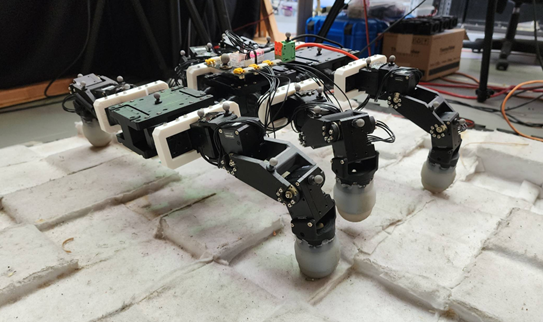Centralization which measures the coupling between neuromechanical modules that mediate responses to perturbations, has been determined to be an important parameter in locomotion for both biologists and roboticists. This metric can help capture how the various subsystems within an organism are interacting to produce an observed behaviour such as navigating across complex terrain.
Our work in Blaberus discoidalis supports the idea that the centralization of their neuromechanical architecture changes with terrain complexity. However, it is unclear whether this change is due to system limitations or because it can be advantageous in terms of performance or energy efficiency. To do this we would need to modulate the centralization of a system on demand which is not possible in the biological organism. So instead, we are using a bioinspired robotic platform.
In collaboration with The Embodied AI & Neurorobotics Lab in Thailand, we are using a robot which allows us to modulate the neural and mechanical coupling independently to test the performance benefits of varying degrees of centralization on flat and rough terrain. Additionally, we can gain insight into the differences of varying neural and mechanical coupling to change the centralization of the system. Our findings may help improve the design of robots to locomote rough terrain more efficiently.
